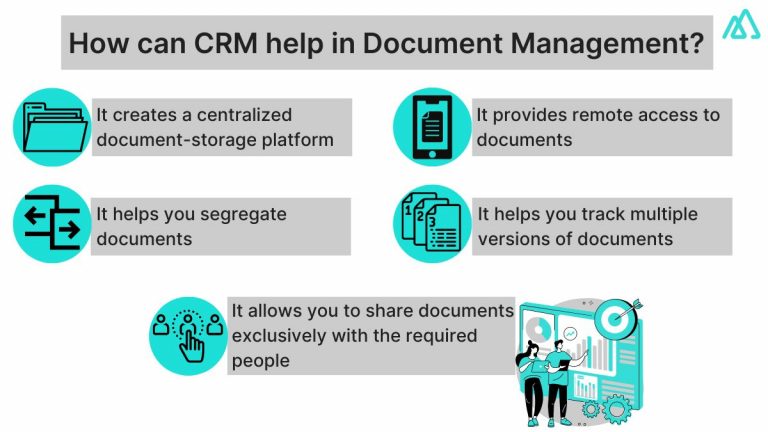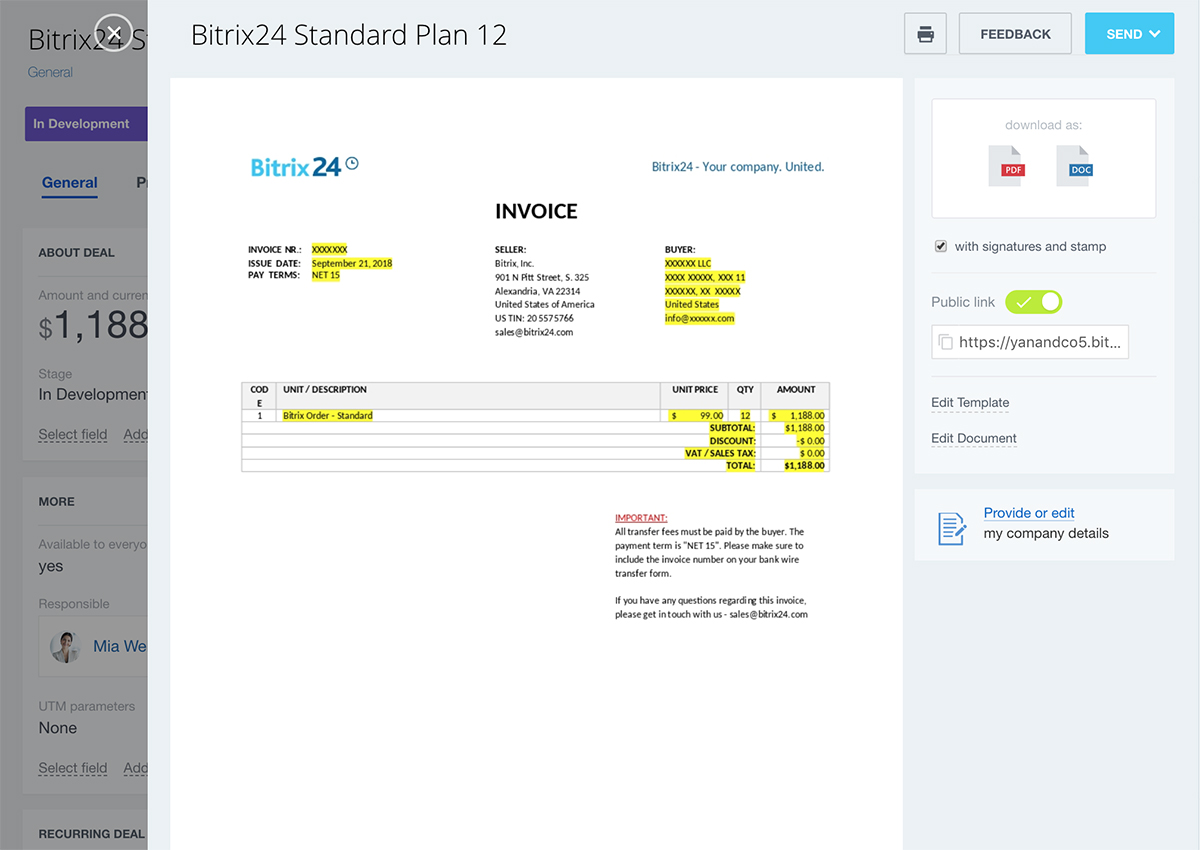Harnessing the power of CRM with document management can revolutionize your business processes. From streamlining workflows to fostering seamless collaboration, this integrated solution empowers you to manage documents efficiently, enhancing productivity and driving success.
Centralized document storage and retrieval, coupled with robust document version control and security, provide a secure and organized repository for all your essential documents. Integration with other business applications further extends functionality, enabling you to access and manage documents effortlessly.
Benefits of a CRM with Document Management
Integrating a CRM with document management capabilities offers a multitude of advantages, streamlining processes, centralizing document storage, and fostering collaboration.
With a CRM that incorporates document management, businesses can eliminate the inefficiencies associated with manual document handling and disconnected systems.
Centralized Document Storage and Retrieval
Centralized document storage within the CRM eliminates the need for scattered filing systems and shared drives. All documents, from contracts to invoices, are securely stored in a single, easily accessible location.
- Documents can be easily searched, retrieved, and shared with authorized users.
- Version control ensures that users always have access to the most up-to-date documents.
- Eliminates the risk of losing or misplacing important documents.
Enhanced Collaboration and Productivity
Document management within a CRM facilitates seamless collaboration among team members.
- Documents can be shared with specific users or teams, enabling real-time collaboration.
- Automated document workflows streamline approval processes and reduce bottlenecks.
- Team members can access and update documents from anywhere, improving productivity and efficiency.
Features of a CRM with Document Management

A CRM with document management capabilities provides numerous features that enhance collaboration, streamline workflows, and improve data security. Here are some key features to look for:Document Version Control: Version control allows multiple users to collaborate on documents simultaneously, ensuring that everyone has access to the most up-to-date version.
It tracks changes, enabling users to revert to previous versions if necessary, reducing the risk of data loss or inconsistencies.Document Security: Robust security measures are crucial to protect sensitive documents. Access controls, encryption, and audit trails help ensure that only authorized users can view, edit, or share documents, preventing unauthorized access and data breaches.Integration with Other Business Applications: Integration with other business applications, such as email, accounting software, and project management tools, enhances functionality.
It allows users to access and manage documents directly within the CRM, eliminating the need to switch between multiple systems and improving efficiency.
Choosing the Right CRM with Document Management

Selecting the right CRM with document management for your business is crucial for optimizing your workflow and improving productivity. Here are some key factors to consider:
Industry and Business Size
Consider your industry and business size when choosing a CRM. Different industries have specific requirements, such as compliance regulations or specialized document types. Similarly, the size of your business will determine the scale and complexity of the CRM system you need.
Specific Requirements
Identify your specific document management needs. Do you require features such as document version control, collaboration tools, or e-signatures? Determine the types of documents you need to manage and the level of security required.
Evaluating and Comparing CRM Solutions
Once you have defined your requirements, evaluate different CRM solutions. Consider factors such as:
- Functionality:Ensure the CRM provides the necessary document management features.
- Integration:Check if the CRM can integrate with your existing systems, such as ERP or accounting software.
- User Interface:Choose a CRM with an intuitive user interface that is easy for your team to navigate.
- Security:Assess the security measures in place to protect your sensitive documents.
- Scalability:Consider the future growth of your business and choose a CRM that can scale accordingly.
Best Practices for Using a CRM with Document Management

A CRM with document management can enhance your organization’s productivity and efficiency. To maximize its benefits, it’s crucial to implement best practices for organizing, sharing, and securing documents within the system.
Organizing and Managing Documents
Establish a clear document structure and naming conventions to ensure easy retrieval. Use folders and subfolders to categorize documents logically, making them easy to find. Implement version control to track changes and maintain document history. Regularly review and purge outdated documents to maintain a clean and organized system.
Effective Document Sharing and Collaboration
Use the CRM’s sharing permissions to control who has access to specific documents. Utilize collaboration tools like commenting, annotations, and version tracking to facilitate teamwork. Set up workflows to automate document approval and routing processes, ensuring timely document approvals and efficient collaboration.
Maintaining Document Security and Compliance
Implement robust security measures to protect sensitive documents from unauthorized access. Restrict access based on user roles and permissions. Utilize encryption to safeguard data at rest and in transit. Regularly review and update security protocols to ensure compliance with industry regulations and data protection laws.
Case Studies and Success Stories

Several businesses have reaped significant benefits by implementing a CRM with document management. Here are a few notable case studies:
Example 1: Company Name
- Benefits:Improved customer satisfaction, increased sales productivity, and streamlined document management processes.
- Challenges:Data migration and user adoption.
- Lessons Learned:Careful planning and training are crucial for a successful implementation.
Example 2: Company Name
- Benefits:Enhanced collaboration, reduced document storage costs, and improved compliance.
- Challenges:Integrating with legacy systems and managing user permissions.
- Best Practices:Establish clear document ownership and access protocols.
Example 3: Company Name
- Benefits:Automated document workflows, increased visibility into customer interactions, and improved decision-making.
- Challenges:Data security and ensuring data accuracy.
- Lessons Learned:Regular data audits and user training are essential for maintaining data integrity.
Future Trends in CRM with Document Management
The integration of CRM and document management systems is constantly evolving, driven by technological advancements and changing business needs. Here are some emerging trends that are shaping the future of CRM with document management:
Artificial Intelligence and Machine Learning
Artificial intelligence (AI) and machine learning (ML) are transforming document management capabilities within CRM systems. AI-powered features can automate document classification, extraction, and indexing, reducing manual effort and improving accuracy. ML algorithms can analyze document content to identify patterns, trends, and insights, providing valuable information for decision-making.
Enhanced Collaboration and Accessibility, Crm with document management
CRM systems with document management are increasingly focusing on enhancing collaboration and accessibility. Cloud-based platforms enable teams to access and share documents from anywhere, on any device. Integration with other productivity tools, such as Microsoft Office 365 or Google Workspace, allows users to seamlessly manage documents within their familiar workflow.
Integration with Business Processes
CRM systems are becoming more deeply integrated with business processes, including document-related tasks. This integration enables automated document workflows, such as contract approvals, invoice processing, and customer onboarding. By streamlining document-related processes, businesses can improve efficiency, reduce errors, and enhance customer satisfaction.
Advanced Security and Compliance
As businesses handle increasingly sensitive documents, the demand for robust security and compliance features in CRM systems with document management is growing. These systems provide encryption, access controls, and audit trails to ensure the confidentiality and integrity of documents. Compliance with industry regulations, such as GDPR or HIPAA, is also a key consideration.
Last Word
Embracing CRM with document management is a strategic investment in your business’s efficiency and growth. By leveraging its capabilities, you can streamline processes, enhance collaboration, and maintain compliance. As technology continues to advance, the integration of artificial intelligence and machine learning will further enhance document management capabilities, shaping the future of document management within CRM systems.
FAQ Overview
What are the key benefits of using CRM with document management?
CRM with document management streamlines processes, provides centralized document storage and retrieval, enhances collaboration, and improves productivity.
What features should I look for in a CRM with document management?
Key features include document version control, security, integration with other business applications, and user-friendly interface.
How do I choose the right CRM with document management for my business?
Consider factors such as industry, business size, specific requirements, and scalability.
